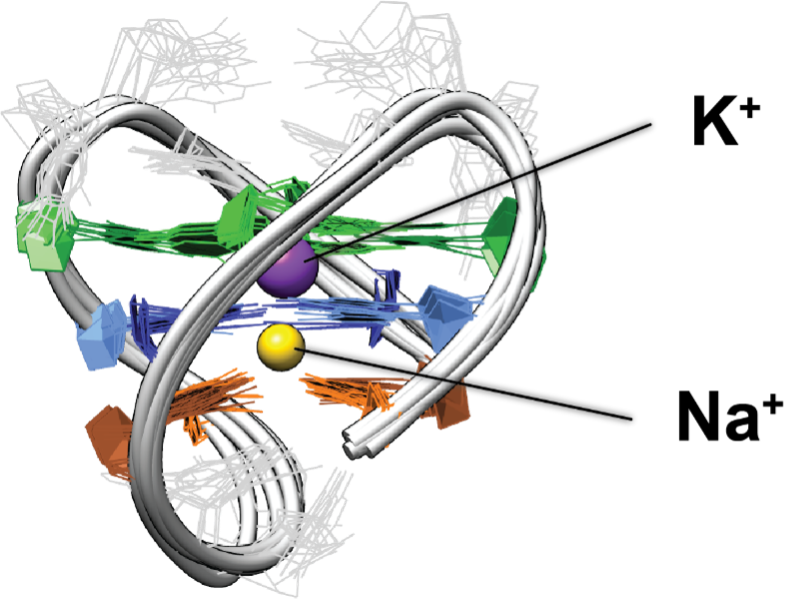A newly discovered DNA quadruplex structure with potential bio-technology applications
|G-quadruplexes (G4s) are structures found in G-rich, evolutionarily conserved regions at the ends of chromosomes, known as telomeres. Studies have shown that these structures are present in various species, including ciliates, fungi, plants, and humans. This suggests that the ability to form G4s is a common trait passed down through evolution. However, recent findings have revealed an exception to this so-called G4 rule in the telomeric DNA of Caenorhabditis elegans (C. elegans), a worm often used as a model organism to study animal genomics and development.

Dr. Martina Lenarcic Zivkovic (National Institute of Chemistry, Ljubljana) and colleagues used the 600 MHz Nuclear Magnetic Resonance Spectrometer LARA available at the Slovenian CERIC partner facility, to analyze telomeric DNA fragments of C. elegans. They discovered a new quadruplex structure called KNa-quadruplex (KNaQ), which is, in contrast to all other known tetrastranded structures, stabilized by the concurrent binding of K+ and Na+ ions. While sequences capable of forming such structures are extremely rare in humans, they are abundant in nematode genomes. Scientists hope to use this knowledge related to KNaQ fold to develop anti-parasitic drugs and create advanced, new-generation bioinformatics tools for the study and prediction of DNA/RNA secondary structures.
These findings challenge our previous understanding of the telomeric DNA of C. elegans, suggesting increased caution when using this species as a model in telomere biology, particularly in drug screening applications.
ORIGINAL ARTICLE:
DNA Quadruplex Structure with a Unique Cation Dependency
Gajarsky M., Stadlbauer P., Sponer J., Cucchiarini A., Dobrovolna M., Brazda V., Mergny J.-L., Trantirek L., Lenarcic Zivkovic M., Angewandte Chemie Int. Ed., 2023



